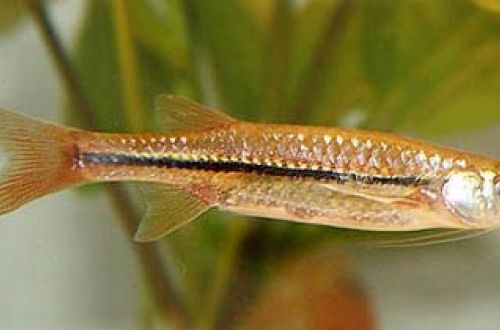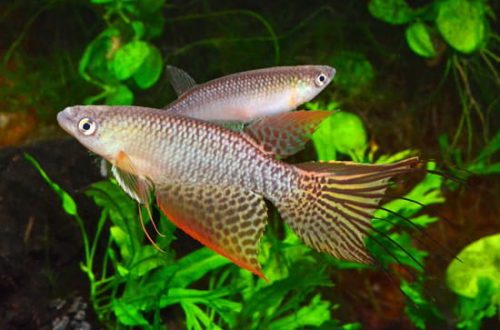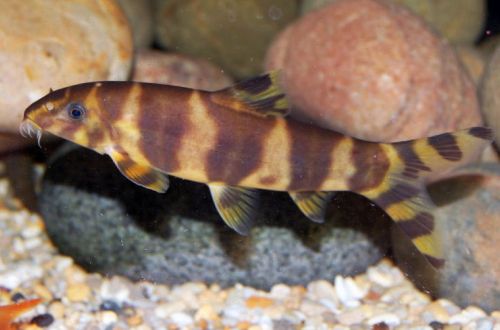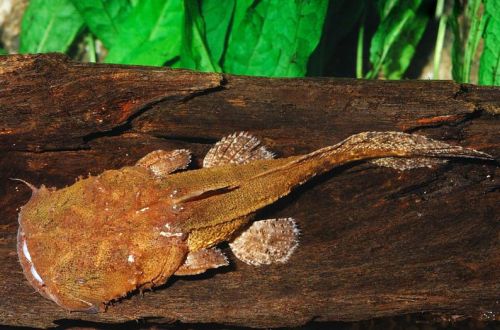
Fish Ezomus
The Esomus fish, scientific name Esomus thermoicos, belongs to the Cyprinidae (Cyprinidae) family. Sometimes it comes under the name Bearded Rasbora, due to the presence of two long antennae. It has an elongated swift body. The anal and dorsal fins are shifted closer to the tail, and the large pectoral fins resemble miniature wings. Thanks to this structure, the fish are able to jump out of the water and quickly accelerate in pursuit of their prey.
Contents
Fish Ezomus
Esomus fish, scientific name Esomus thermoicos, belongs to the family Cyprinidae (Cyprinidae)

Habitat
Presumably it is endemic to the island of Sri Lanka. It occurs mainly in weakly flowing, muddy, silty water bodies.
Behavior and Compatibility
An active peaceful fish. In nature, it keeps in small flocks. In home aquaria, it is also preferable to maintain a group size of 8-10 individuals. In a pair or alone, it becomes shy. They get along with many non-aggressive species of comparable size.
Brief information:
- The volume of the aquarium – from 250 liters.
- Temperature – 24-30°C
- Value pH — 6.0–7.0
- Water hardness – soft (1-10 dGH)
- Substrate type – any
- Lighting – subdued
- Brackish water – no
- Water movement is weak
- The size of the fish is about 13 cm.
- Food – any food
- Temperament – peaceful
- Keeping in a flock of 8-10 individuals
Maintenance and care, arrangement of the aquarium
The bearded rasbora is considered an unpretentious and hardy species, which is completely undemanding to the conditions of detention. Perfectly adapts to a wide range of pH and dGH values. Able to live in an environment that will be unfavorable for other aquarium fish. However, you should not run an aquarium. It is important to carry out all the necessary procedures for its maintenance, as well as equip it with basic equipment (filtration system, heater, lighting system, etc.).
Due to the tendency to jump, it is worth taking care of the presence of a cover.
The layout is arbitrary. Thickets of plants are welcome, acting as shelters and a place for spawning. Esomus lays its eggs on floating and/or tall rooting plants near the surface.
Food
Omnivorous species. Accepts most popular foods in the aquarium trade in dry, frozen and live form.





